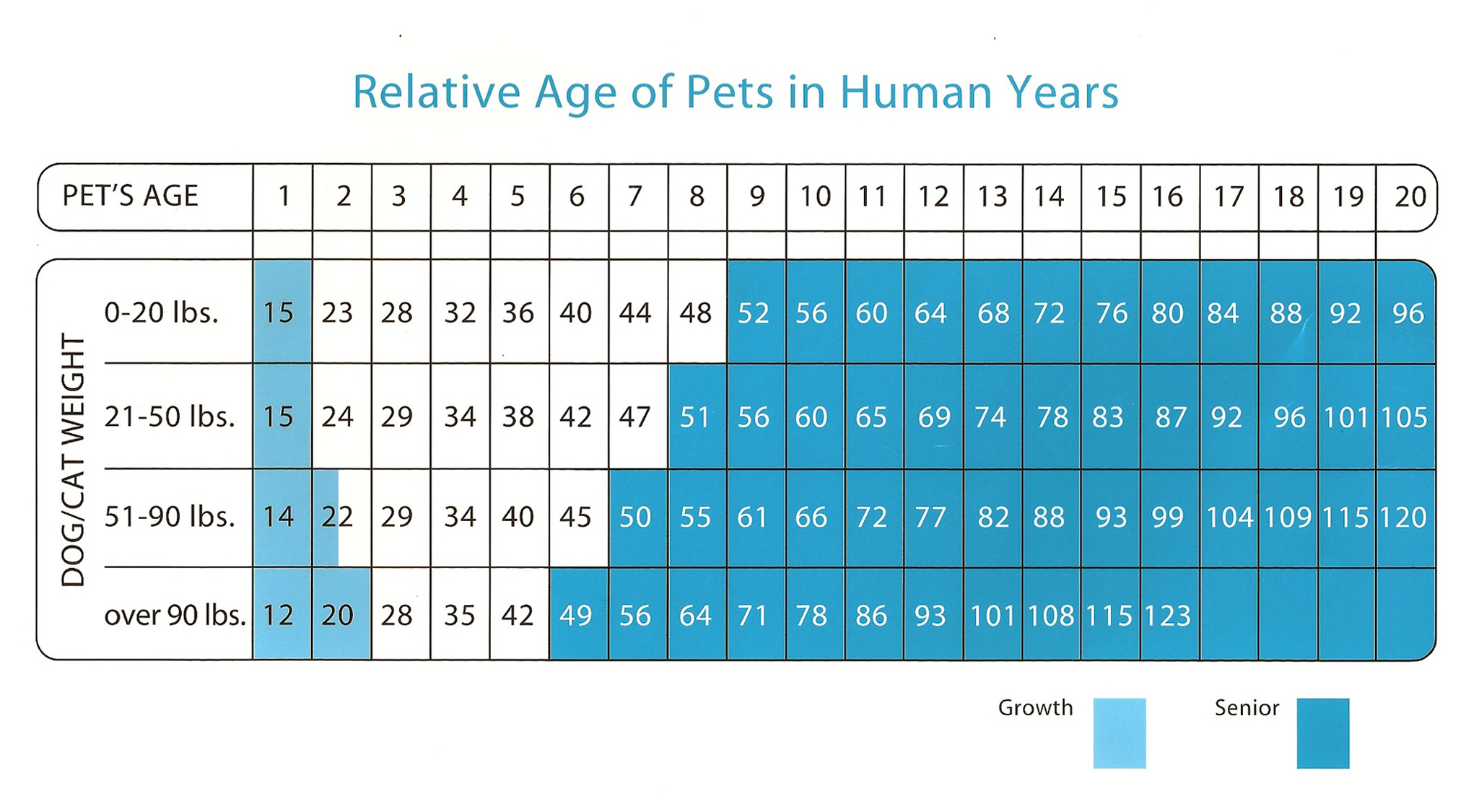Pet Age Chart
Everyone has heard the myth about ‘dog years,’ which often is described to mean that a dog ages the equivalent of 7 human years for every year of a dog’s life – which would mean a 3-year-old dog’s age is equivalent to that of a 21-year-old person, a 4-year-old dog’s age is equivalent to that of a 28-year-old person, and so on.
The truth is: the relationship is more complex than that. Dogs of different breeds and sizes age at different rates, and that rate can increase or decrease depending on the dog’s ageas shown in the chart below.
Why Does It Matter?
There are a number of reasons why owners should be aware of this variable aging rate. Among the most important are:
Puppies are going through their fastest growth for their first year or even their first two years for large breeds. During that entire time, puppies should be fed a complete and balanced puppy food. It may seem strange to call an 18-month-old, 60-pound large breed dog a ‘puppy’ – but that’s still what he is.
Large breed puppies have special nutritional needs. These include the need to manage caloric intake to help a large breed puppy achieve and maintain an ideal body condition. Keeping your large breed puppy lean helps keep muscular and skeletal growth rates at an ideal pace.
The rule of thumb is that dogs of breeds that typically weigh 50 pounds or more when full-grown are large breeds and will be puppies for up to 2 full years. In terms of selecting food and providing health care, you should manage them as puppies for that time.
Even though large breed dogs take longer to reach full maturity, they also will show signs of growing older sooner than other dogs. Very large dogs can become senior canines as early as 5 years. Owners should manage their dogs accordingly.
